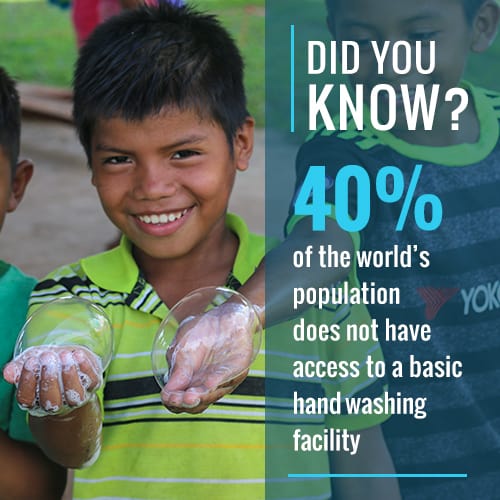Why Poor Communities Have the Worst Hygiene Levels During COVID-19
Research is showing that poverty-stricken communities are being affected by the novel coronavirus outbreak at levels higher than their more affluent counterparts. This makes individuals in these communities more susceptible to illness, as well as increases the rate of disease transmission. There are several reasons for this increased susceptibility, mostly pertaining to poor hygiene and the inability to access pandemic prevention methods.
Little Access to Cleaning Materials
Peak moments of coronavirus transmission happen in impoverished communities that tend to lack access to cleaning materials and personal protective equipment. It’s no surprise that proper handwashing is a key way to prevent the spread of illness. In order to do so, however, individuals must have access to soap and water or a hand sanitizer with an adequate level of alcohol.
Those with limited economic resources are less likely to have the funds to purchase these materials, making proper handwashing more difficult. They are also less likely to have the funds to purchase face masks or gloves, which are also key in reducing the spread of germs. Without these materials, individuals must interact with others in a way that increases transmission risk.
Those with funds to purchase these items, however, may live in a food desert where there is no local grocery store. For these people travel may be difficult, further preventing them from acquiring what they need to maintain cleanliness.
Work Does Not Allow for Social Distancing
The CDC has advised citizens to maintain social distancing as a way of reducing the spread of the novel coronavirus. Many fields have allowed increased access to telework, which keeps employees out of cramped offices. Those in low-income communities, however, are less likely to hold jobs that allow for telework. This forces them to go to their jobs in person, making it harder to maintain social distancing.
Many of these jobs, such as work in restaurants, involve being close to coworkers for long periods of time. Those in restaurants or retail are also exposed to customers, increasing the number of people with whom each employee has contact. It is impossible for these workers to avoid contact with others, making disease transmission highly probable.
Those in low-income jobs such as restaurant employees, nannies, and home care aides are also less likely to have paid sick leave. Taking sick time results in less income or potential loss of the job, factors that make sick employees more likely to go to work. Having sick employees in the workplace makes disease transmission likely, especially in closed areas with poor ventilation.
Substandard Housing Increases Health Risk
Public health experts have explained that people with pre-existing health conditions are more likely to both contract the coronavirus and experience more severe symptoms of the illness. The substandard housing found in many low-income communities can cause a number of health conditions, including respiratory ailments, allergies, and increased risk of cardiovascular problems.
These conditions make it more likely that an individual will contract the novel coronavirus, as well as experience more severe symptoms. With limited economic stability, though, it is difficult for individuals with substandard housing to fix their homes. Issues involving mold, pests, and poor water quality are unable to be addressed, leaving homeowners at high risk.
Another housing issue comes into play when examining the layout of housing in low-income communities. Low-income individuals are less likely to be homeowners than their more affluent counterparts. Instead, they live in apartments or cramped neighborhoods, areas that make social distancing more difficult.
Access to Healthcare is Limited
Those living in low-income communities are less likely to have access to healthcare measures for testing and treatment of the virus. Low-income jobs are less likely to provide adequate healthcare to employees, leaving them financially liable for any treatment they may need. This is cost-prohibitive for many, making them unlikely to go to a medical facility for treatment. Because they are unable to receive treatment, many continue on with their routines, infecting others in the process.
Those in low-income communities may also have more difficulty accessing transportation. This makes it difficult to access testing if testing locations are a distance away. The same is true for situations in which an ill person would need to be transported to the hospital. Without private transportation, they would need an ambulance. Many would be unable to pay the fees associated with an ambulance ride, preventing them from utilizing the service.
Conclusion
With the novel coronavirus ravaging the globe, public health experts have been scrambling to contain the virus. While these efforts have been effective in middle and upper-class communities, those below the poverty level remain at risk. The inability to access cleaning supplies, healthcare, and proper social distancing are to blame for the rampant spread of the virus in these communities.
Help us get viral by sharing this page.



